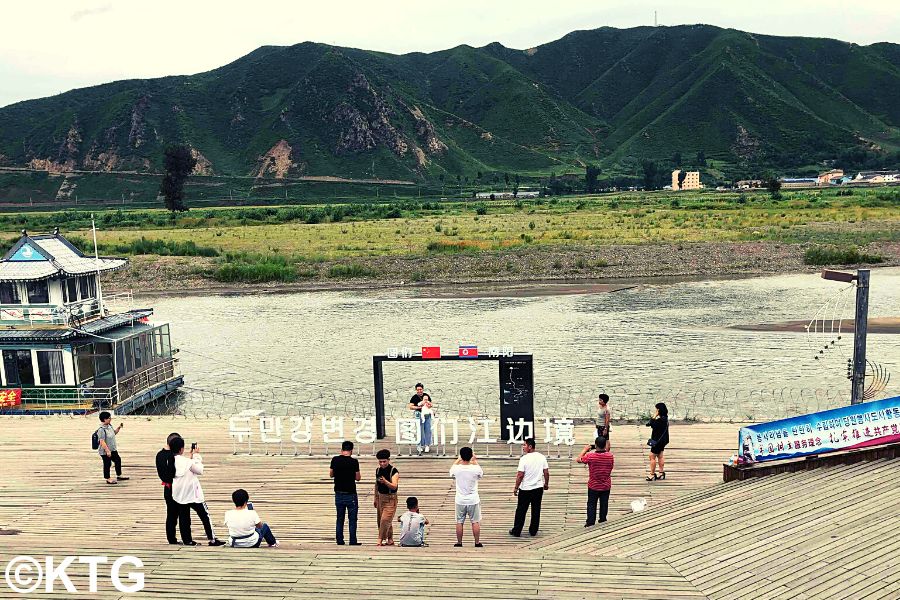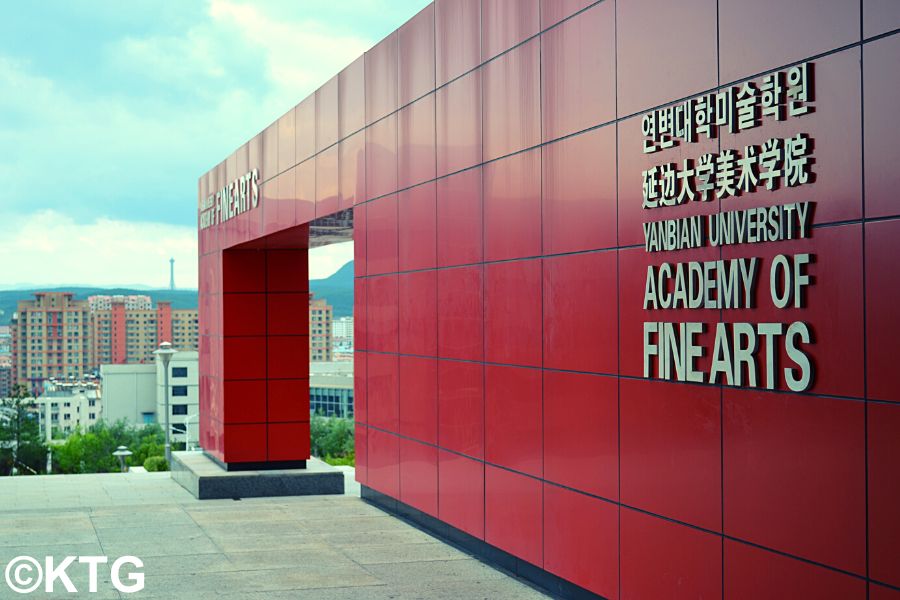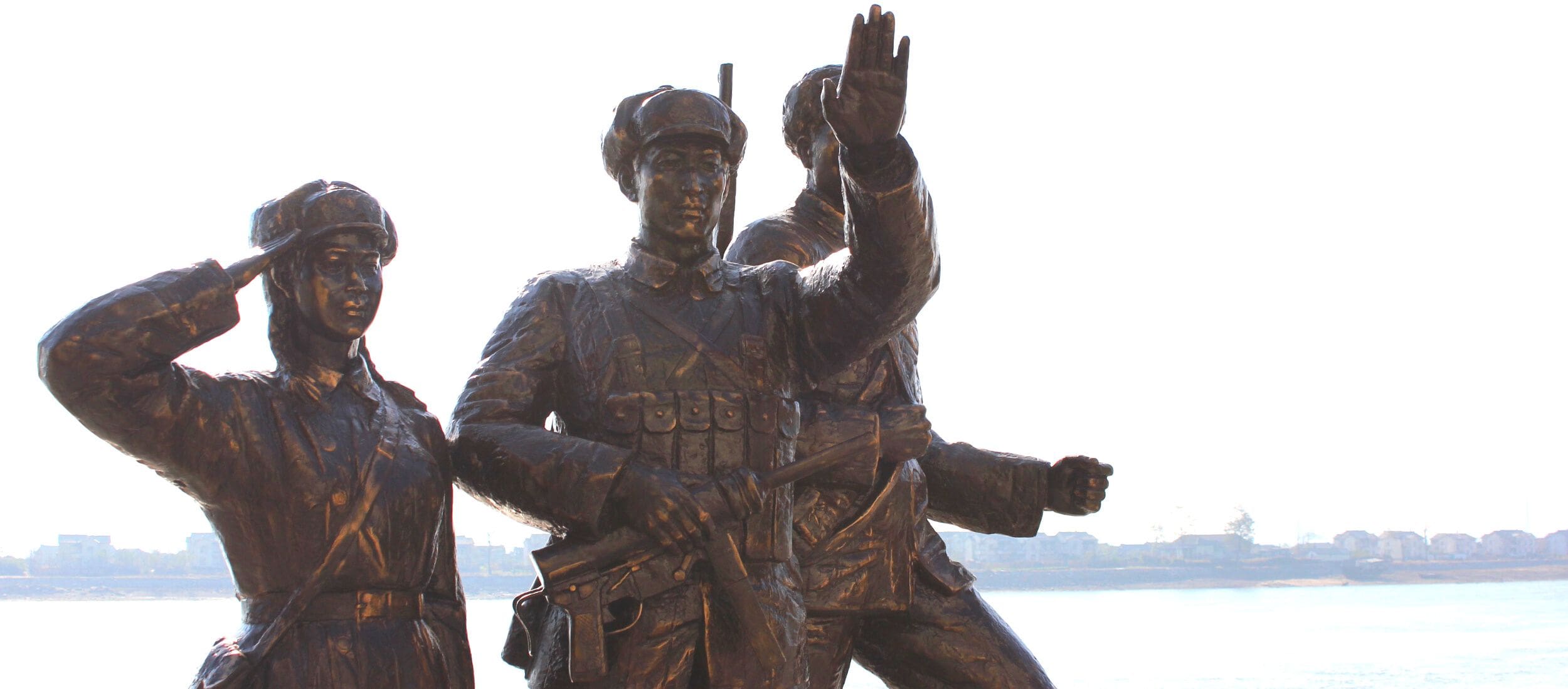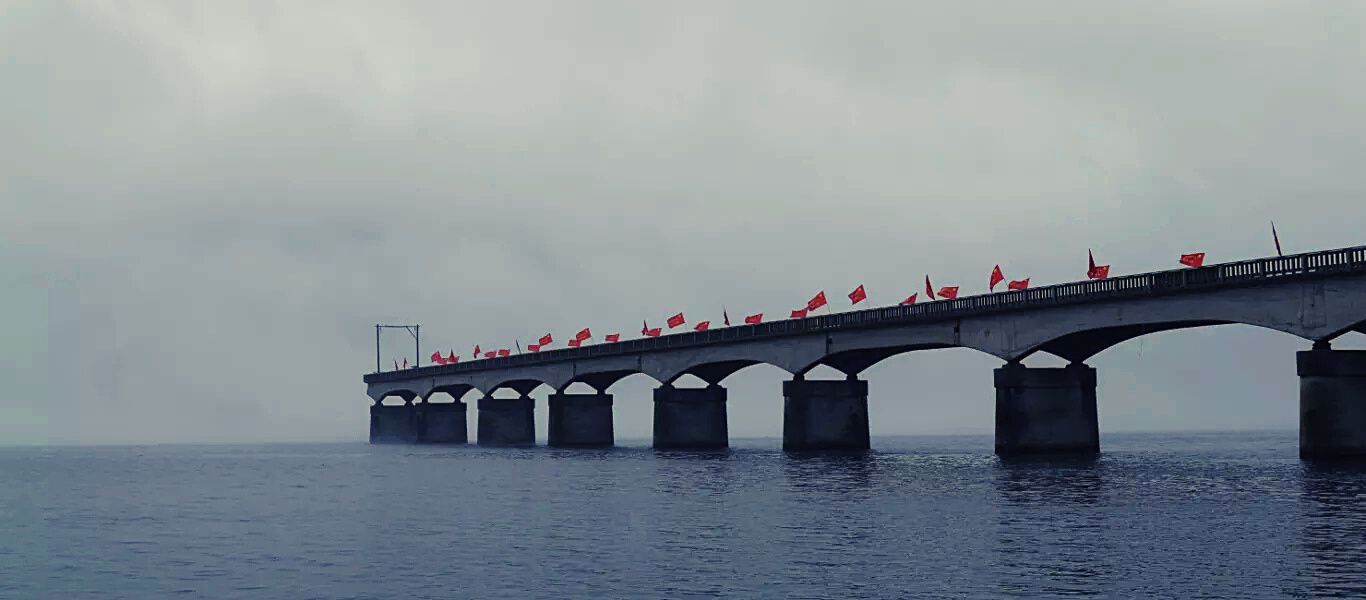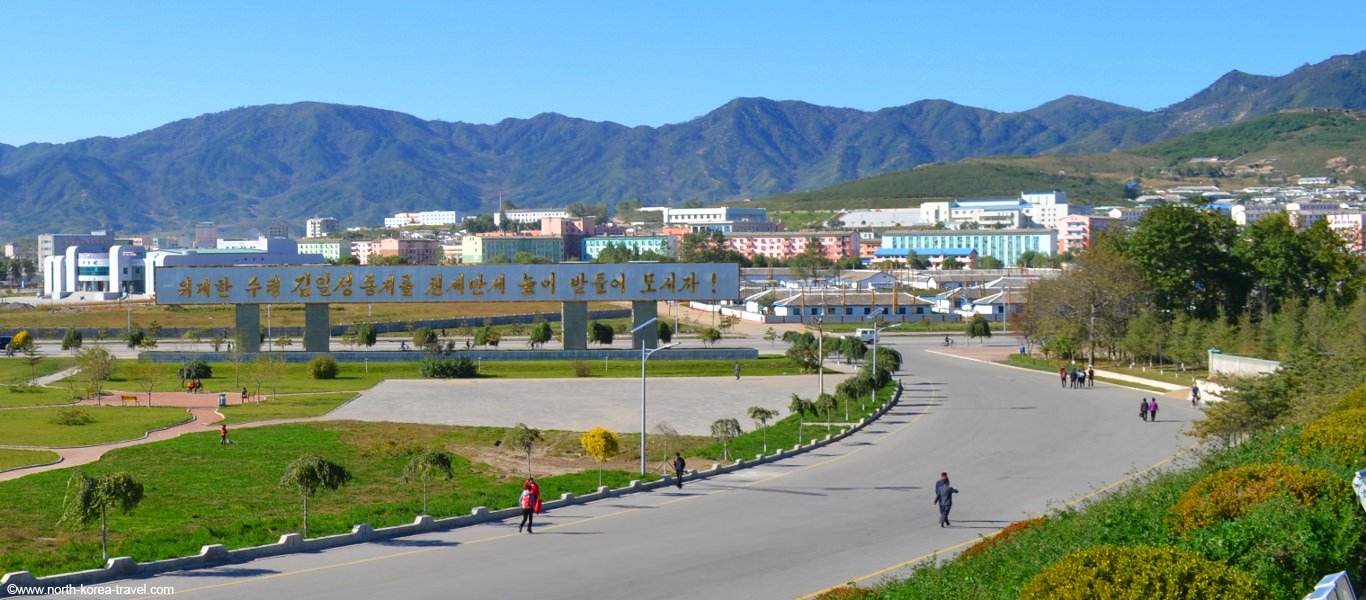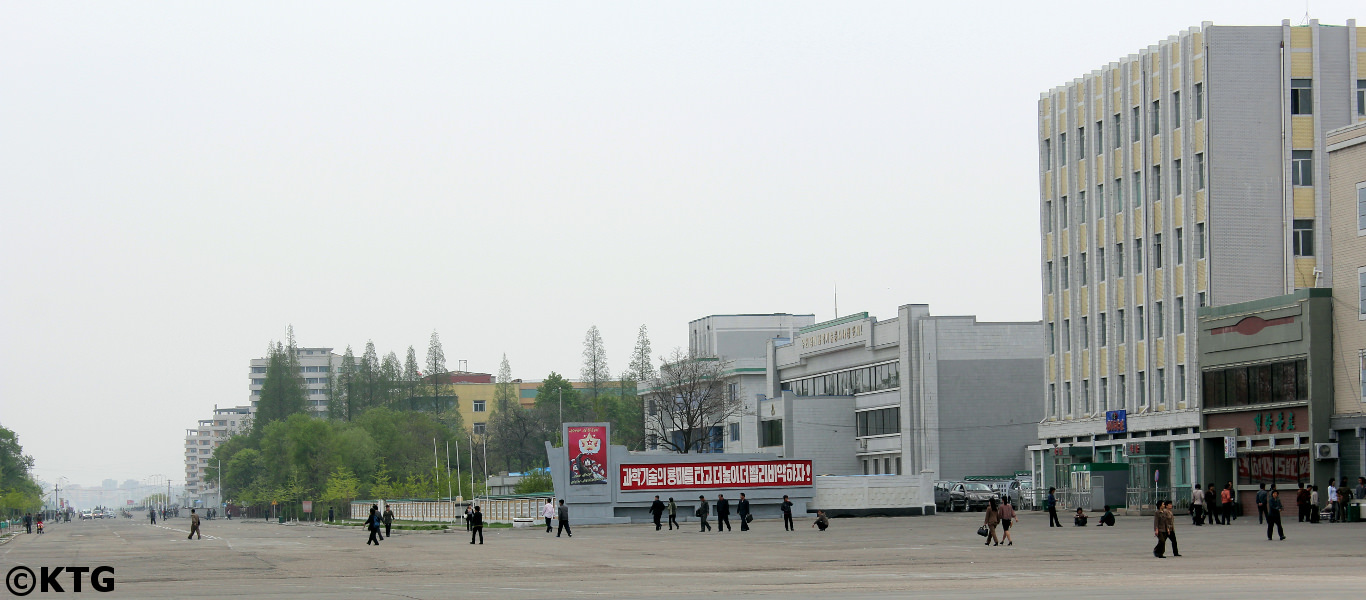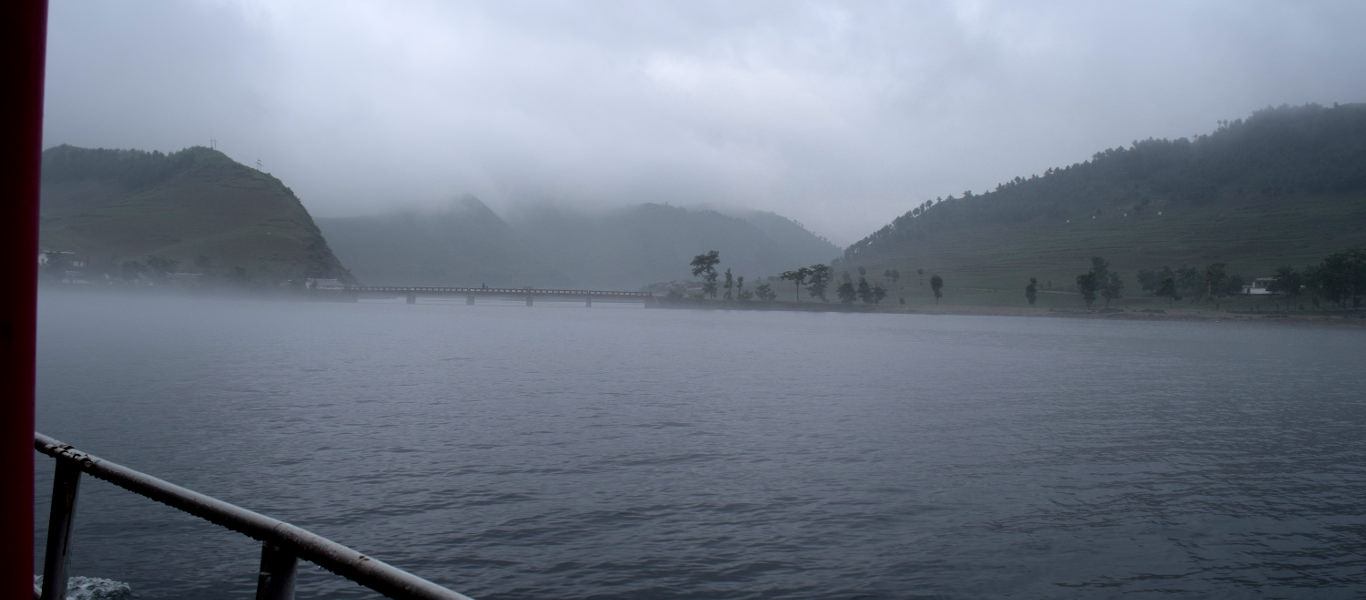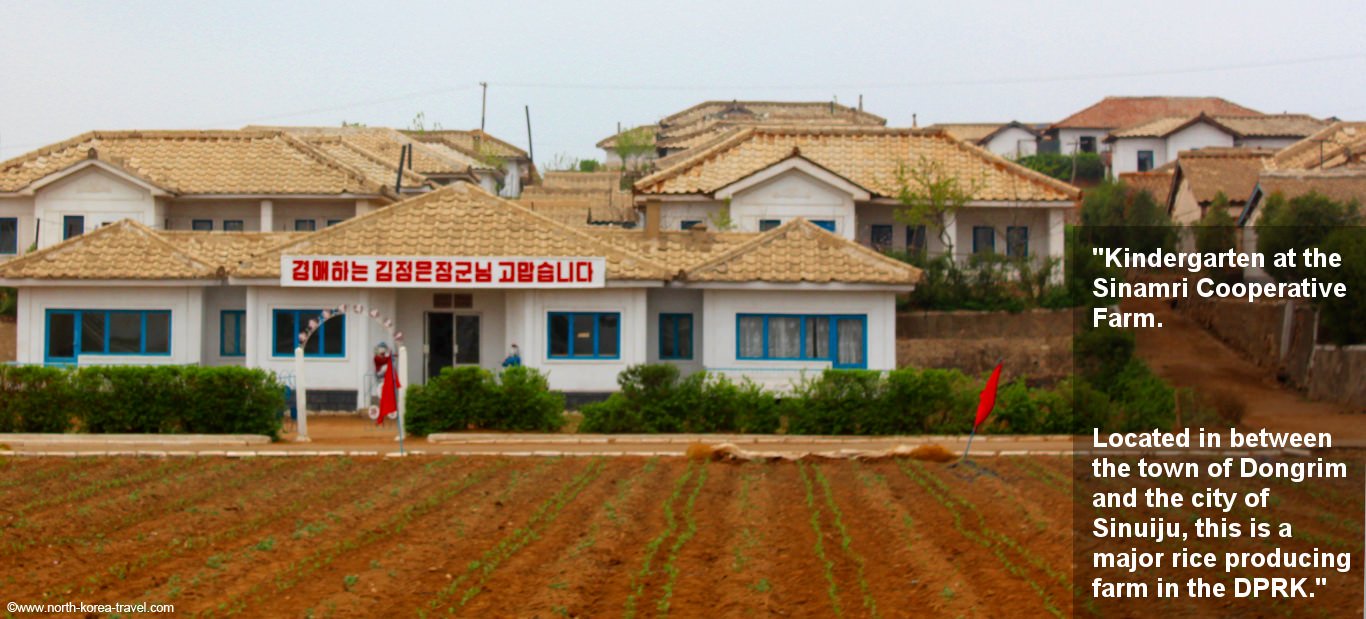-
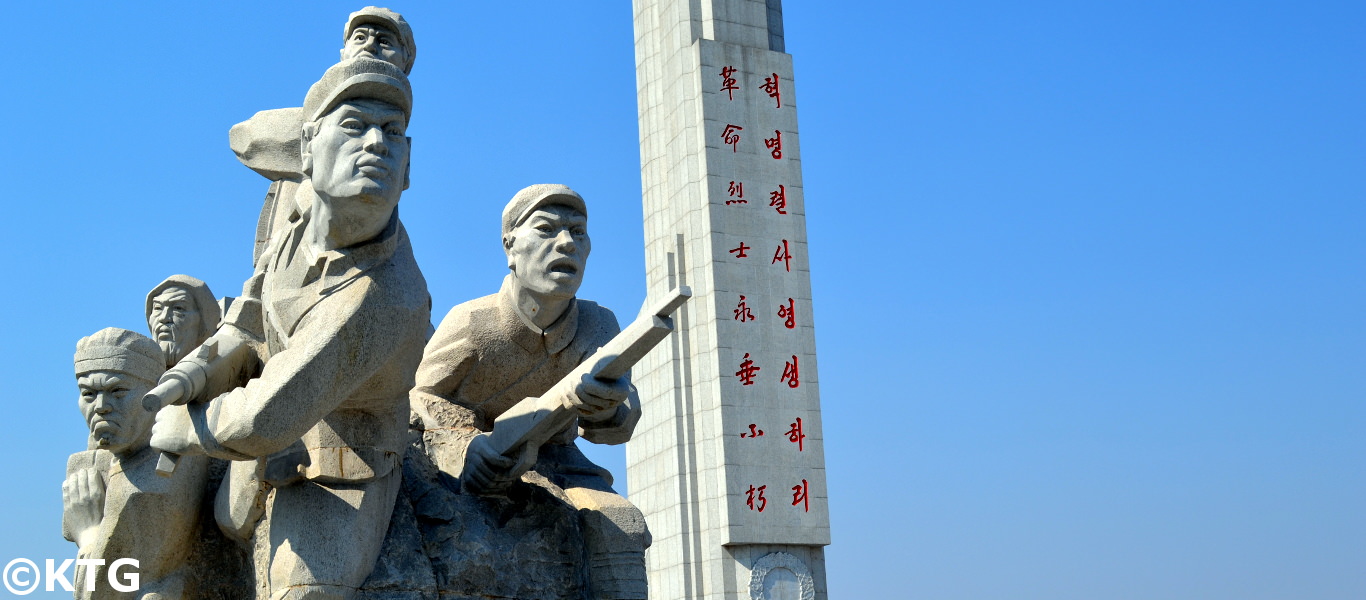 Yanbian 연변
Yanbian 연변 -
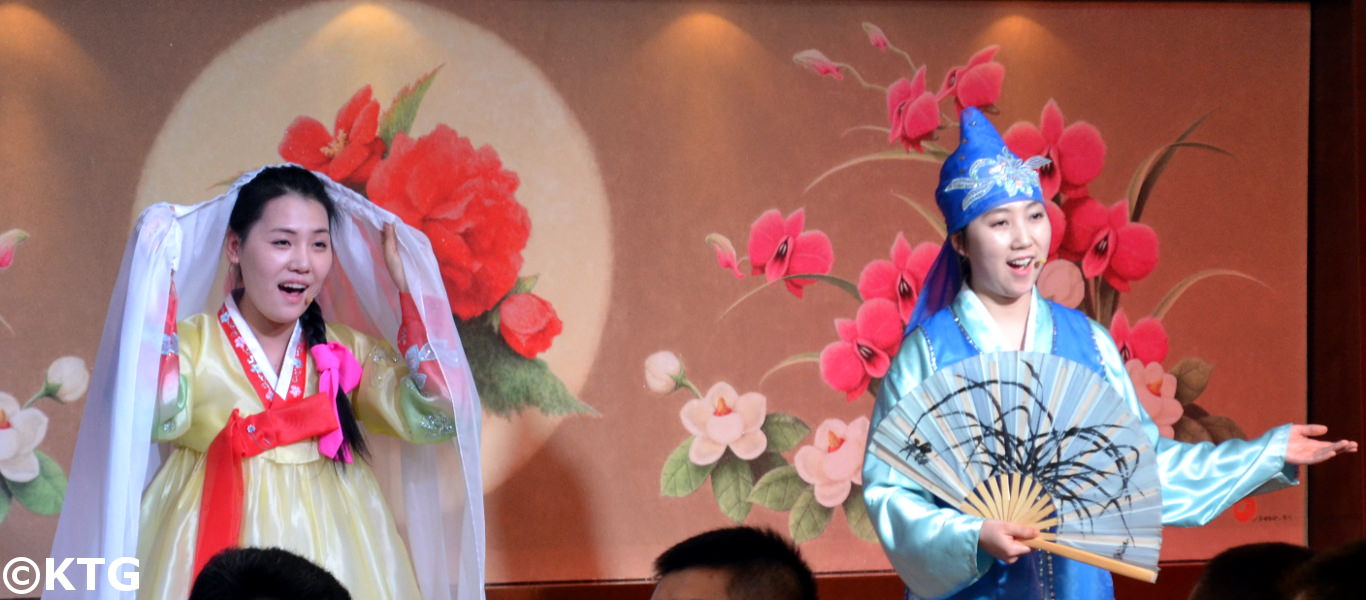 DPRK Restaurant
DPRK Restaurant -
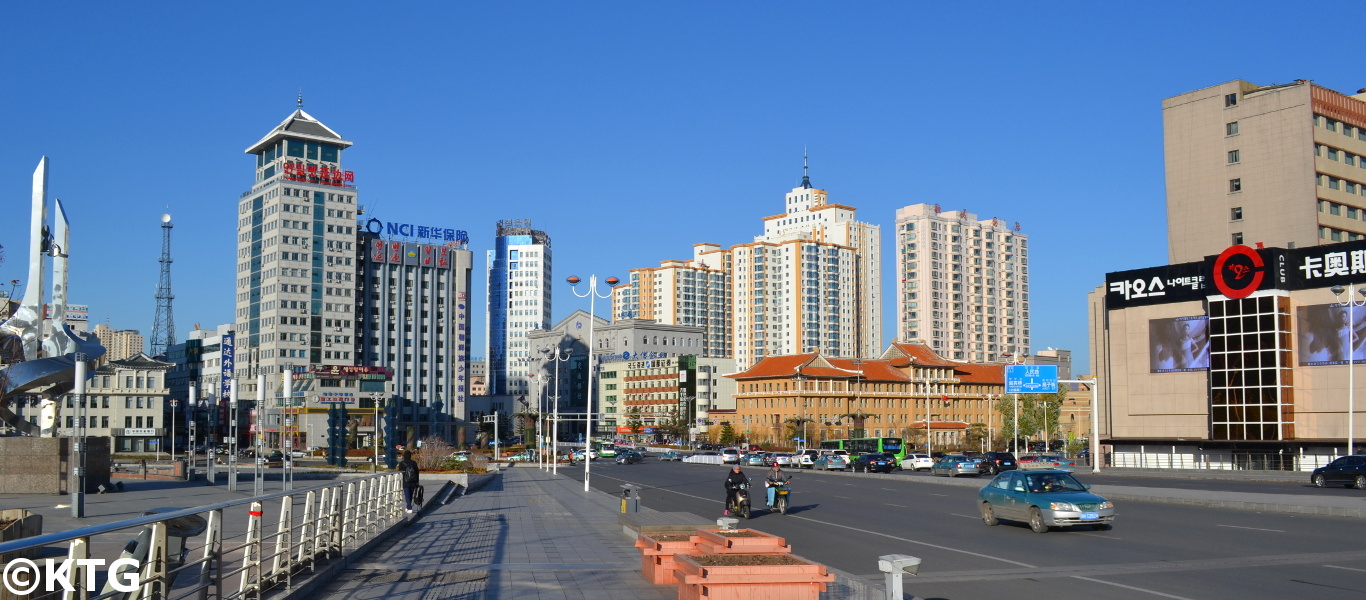
-
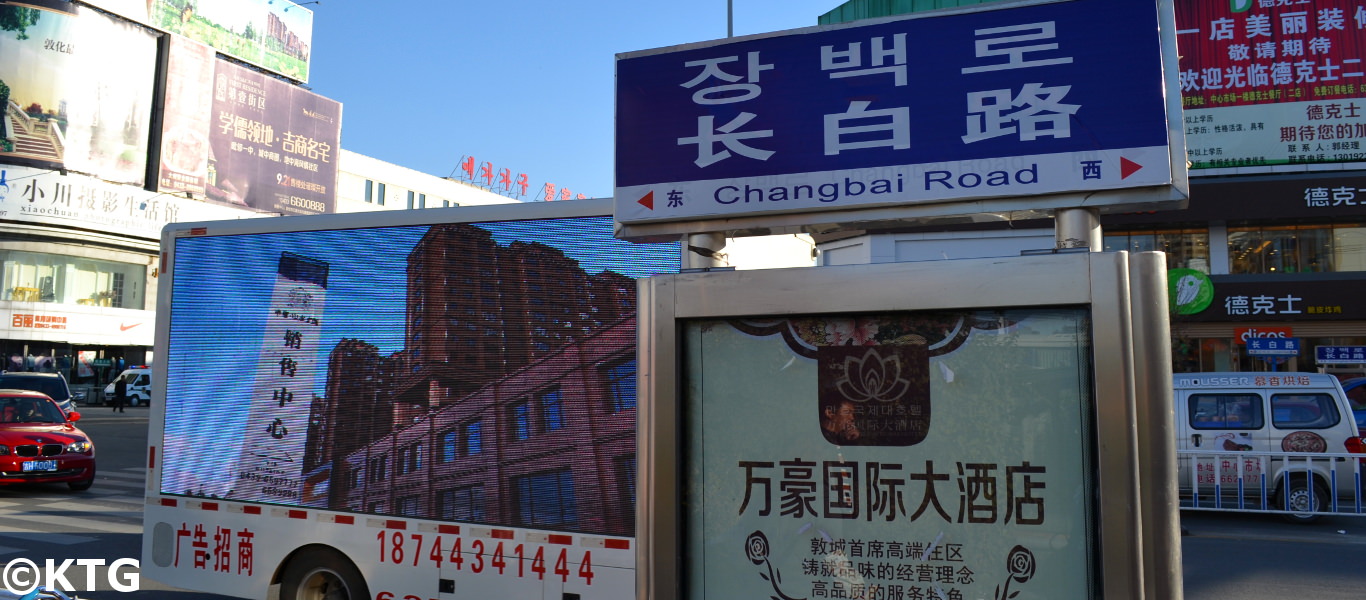 Bilingual Yanbian
Bilingual Yanbian
Yanbian Korean Autonomous Prefecture
Home of the Korean Ethnic Minority in China
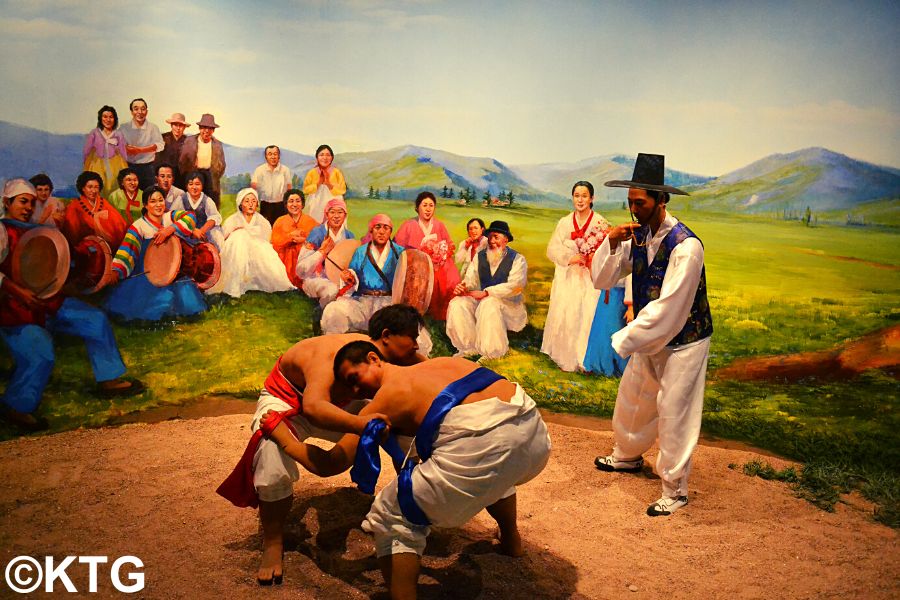
Korean wrestling scene, Sirum (씨름), at the Korean folk museum in Yanji, capital of Yanbian
The Yanbian Korean Autonomous Prefecture is located in Jilin Province, Northeast China. Bordering North Korea and Russia, it is an autonomous prefecture given its large population of ethnic Korean Chinese; Chao Xian Zu (朝鲜族 in Chinese, 조선족 in Korean).
Please note that we usually enter Rason via this prefecture though it is also possible to do so via Pyongyang.
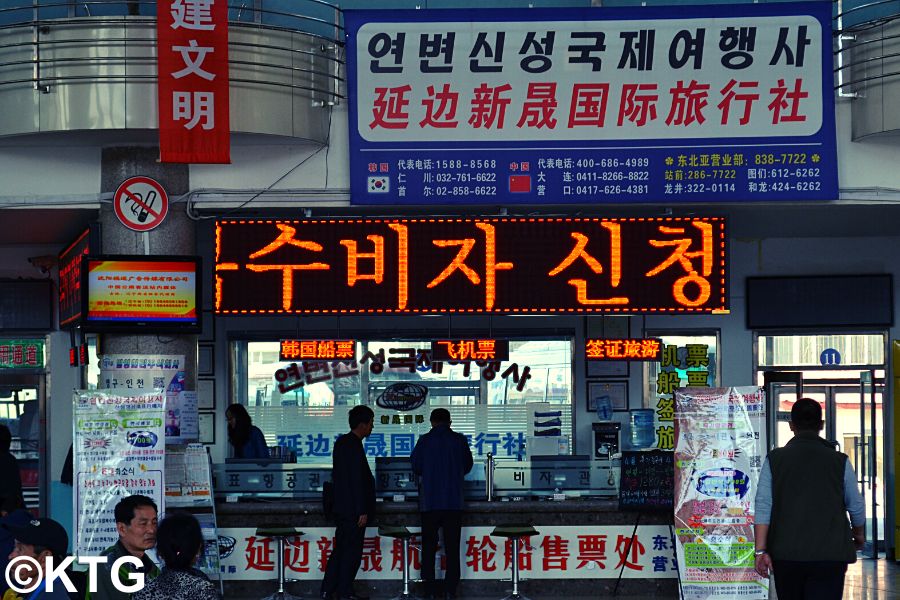
Korean characters. Bus station in Yanbian
Proud of their Korean heritage, customs and language, ethnic Korean Chinese in Yanbian are first and foremost Chinese and very patriotic and proud of being Chinese.
The Yanbian Chaoxianzu Autonomous Prefecture is divided into 6 cities and 2 counties. The capital of the prefecture is Yanji. Please see our links below with more details regarding each of these cities and counties.
Yanbian offers a mishmash of Korean, Chinese and, in the case of Hunchun city, Russian cultures.
Background of Yanbian
In the late 1800s many Koreans left the Korean Peninsula and settled in this part of China. When Korea became colonised by Japan in 1910 many Koreans also fled for political reasons, though the number of people fleeing was most significant when the People’s Republic of China was formed. The region was granted the state of Korean Autonomous Region in 1952 and this was upgraded to Korean Autonomous Prefecture in 1955.
Yanji has become increasingly popular these past few years. The main gates you see above are Yanbian University's.
Culture
It is fascinating to see the influence of Korean culture in Yanbian and how it mixes harmoniously with mainstream Chinese culture.
Signs in this prefecture are in Chinese and Korean and hearing people speak Korean in the street is absolutely normal.
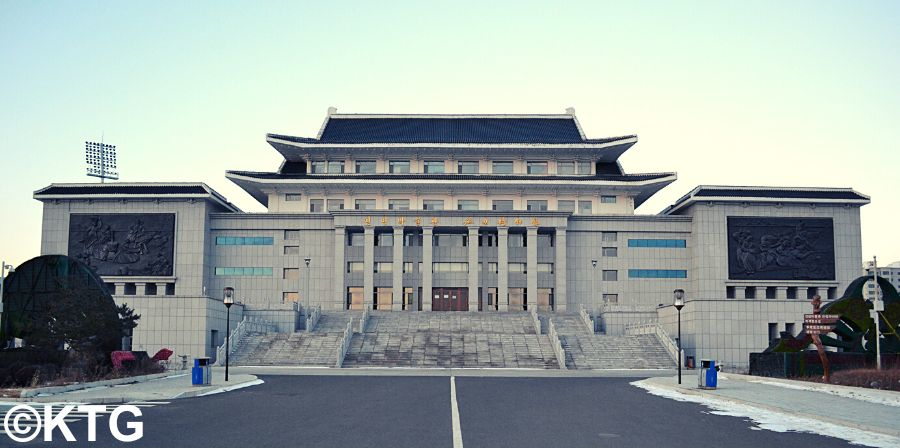
Korean Folk Museum in Yanji, capital of Yanbian
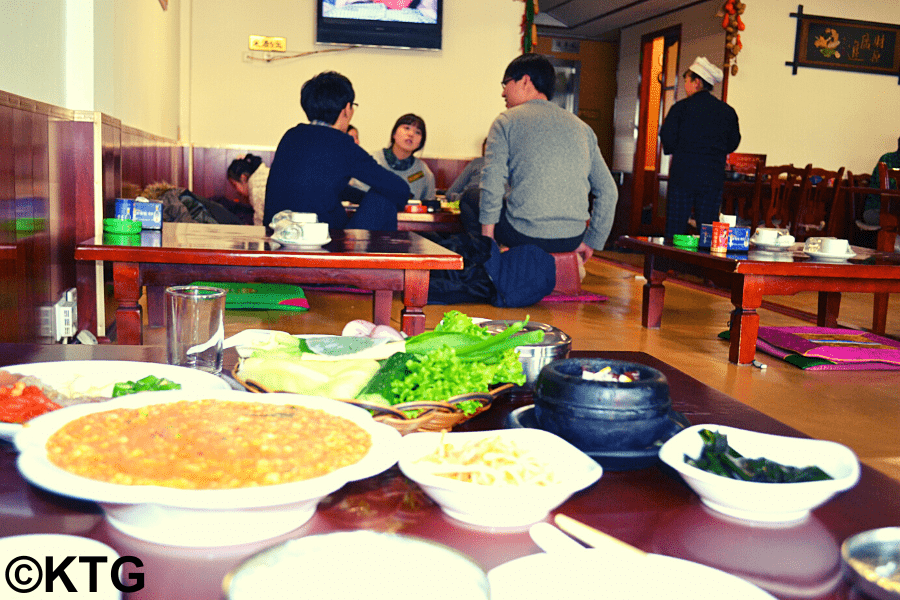
Chosonjok Restaurant in Yanbian. These are ethnic Korean Chinese and their mother tongue is Korean.
There has been an increase of ethnic Korean Chinese going to South Korea to work and this has in turn somewhat influenced life in Yanbian with, for example, South Korean style coffee shops and a nightlife scene similar to that of South Korea being formed in the past years.
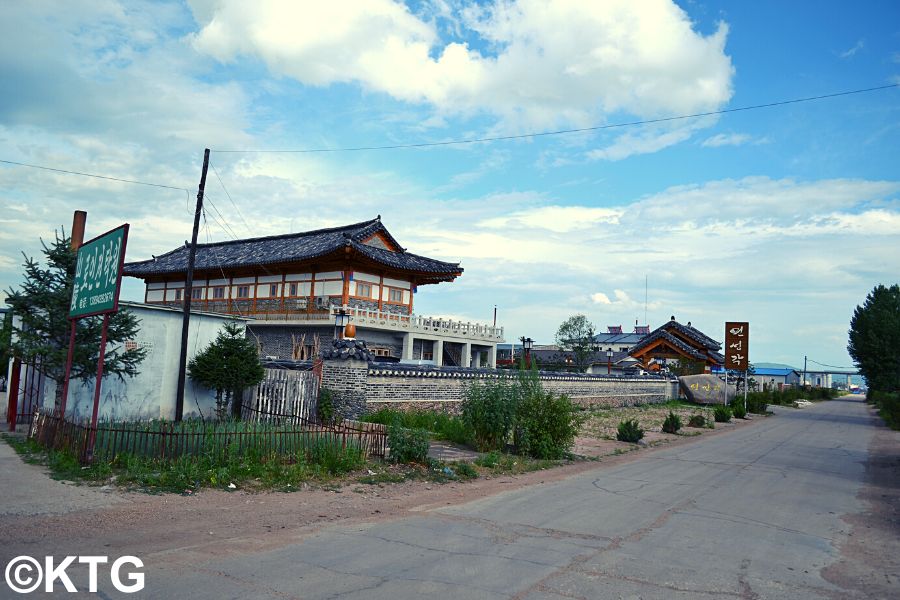
Korean Chinese village in Yanbian. The houses in ethnic Korean villages in Yanbian have traditional Korean architectural features.
Unsurprisingly, South Korean pop-culture is very popular amongst the younger generations, not only Korean Chinese but also Han Chinese, and this can be seen in the tv shows they follow, the way they dress and products they use. It is also common for South Korean artists to perform here.
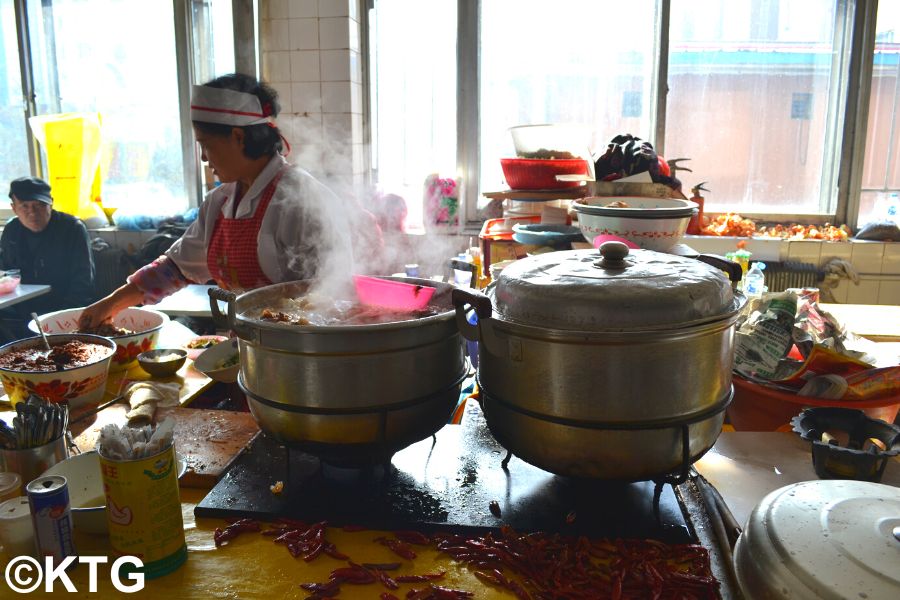
Dog soup in a market in Helong, Yanbian
There are also many businesses from North and South Korea in Yanbian. Several DPRK restaurants are extremely popular in the region and it is not uncommon to encounter South Koreans setting up their small businesses in this prefecture.
Cities and Counties in Yanbian
Below you can see a list of the cities and counties in Yanbian. Please click on them for more specific information on each area:
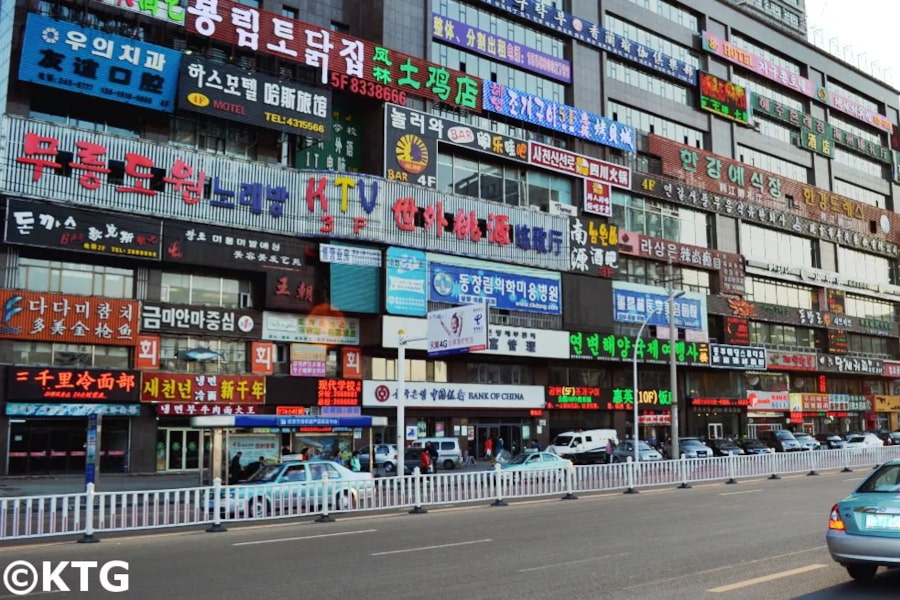
Mini Seoul in Northeast China? Yanji city
Yanji
Yanji (延吉市 in Chinese,연길시 in Korean) - capital of the Yanbian Korean Autonomous region. With just over 400,000 inhabitants, it is considered a small city in Chinese terms. However this city has two universities, an international airport with flights to Seoul and on some rare ocasions toPyongyang and a high speed train station. Packed with Korean styled coffee shops, several North and South Korean restaurants and Korean being the mother tongue of a large percentage of the population, Yanji has been nicked name by some Western outlets as"West Korea" or "mini-Korea." However, calling ethnic Korean Chinese from Yanbian Koreans can offend them as they are very proud to be Chinese and they will stress that they are one of the 56 ethnic groups that make up their culturally rich country, China.
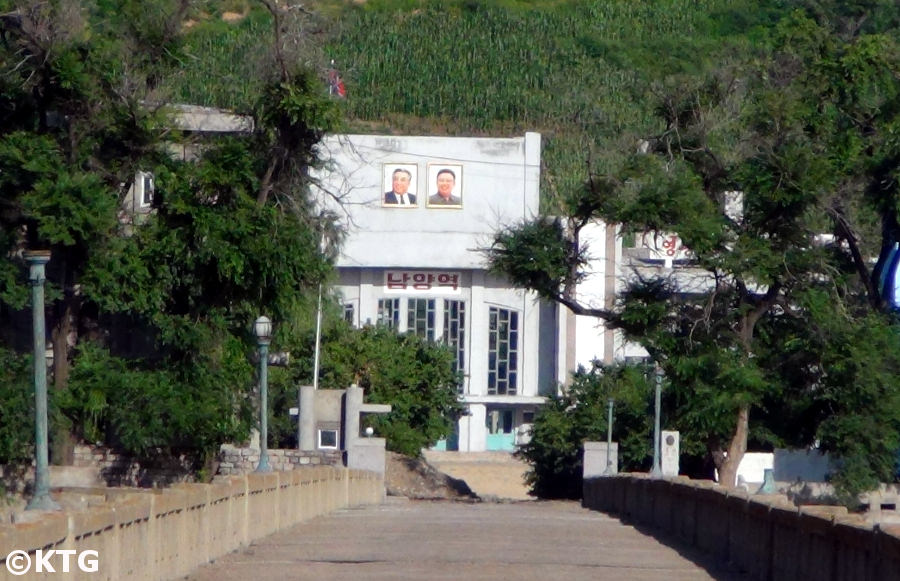
Namyang in North Korea seen from the bridge that connects China and the DPRK in Tumen
Tumen
Tumen(图们市,도문시) - although the city with the lowest population in Yanbian, it is fascinating given that it is just across from the DPRK. We can actually cross over this bridge into Namyang (남양) and start our DPRK Rason Tour from there. If we drive around 20 minutes away from the city centre it is possible to stay in a traditional Korean village in Tumen which faces North Korea from across the Tumen River. We will be able to see rural life in North Korea from here as well as the local train station without having to enter the DPRK.
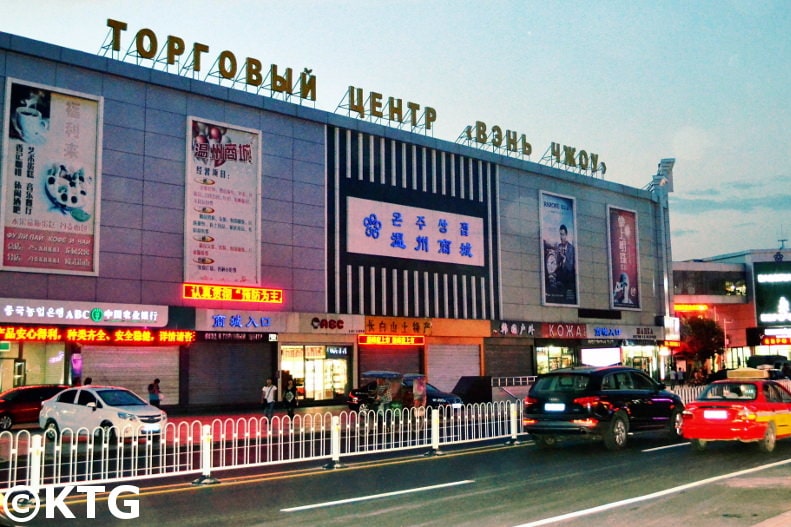
Shopping Centre in Hunchun. Note the Russian, Korean and Chinese signs.
Hunchun
Hunchun City (珲春市, 혼춘시) - we usually enter Rason from Quan He (泉河) which is around a 40 minute drive from this city where there is a strong Chinese, Russian and Korean cultural mix.
You can head to Fang Chuan (防川) from here too, which is where the three countries meet. This city is an extremely popular destination for Russians.
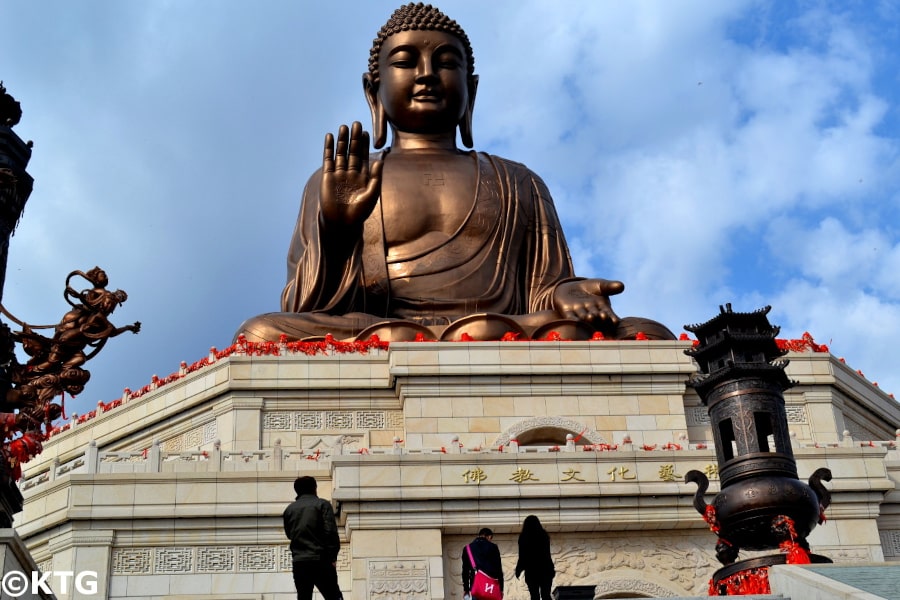
Liu Ding Shan, Dunhua
Dunhua
Dunhua (敦化市,둔화 시) - with a population of over 400,000 it is similar to that of Yanji in terms of size but distinctively different to the capital of the prefecture. There is, though, less Korean influence and it is more common to hear people speak in Chinese rather than Korean. Dunhua has a temple, Liu Ding Shan, that hosts a giant buddhist statute which can be seen from miles away. If ever going to Yanji or Tumen you can see this statue from the train.
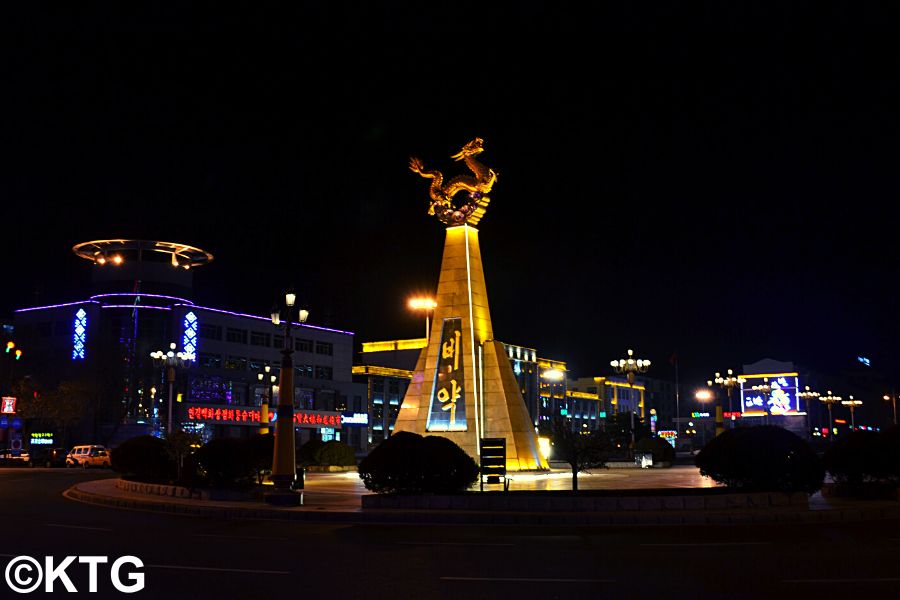
Peace Dragon, Helong
Helong
Helong (和龙市,허룽 시)- city of 220,000 inhabitants, it has a large concentration of Korean Chinese. This extremely clean city is surrounded by beautiful green mountains on one side. If going to Helong we recommend you to stop by the central square which will be packed with locals playing volleyball, tijian, skating and all kinds of sports and games. The sight of a Westerner is not that common here and you will be more than welcome to join in!
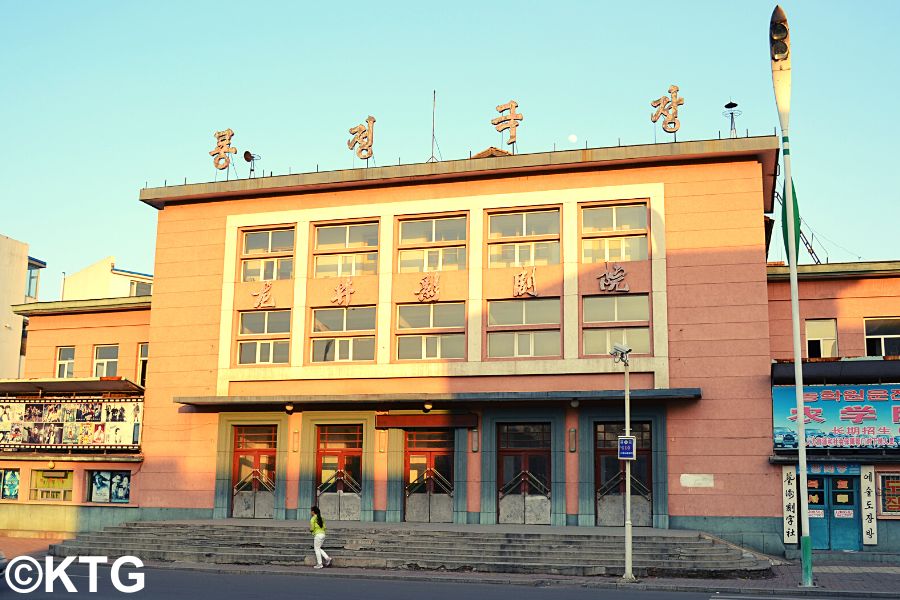
Cinema, Longjing city
Longjing
Longjing (龙井市,룡정시) - only 20 minutes away from Yanji and around half its size in terms of population but seemingly much smaller, this city has a large percentage of ethnic Korean Chinese citizens. It is relatively close to Hoeryong which is the birthplace of the DPRK National Heroine Kim Jong Suk (wife of Kim Il Sung and mother of Kim Jong Il).
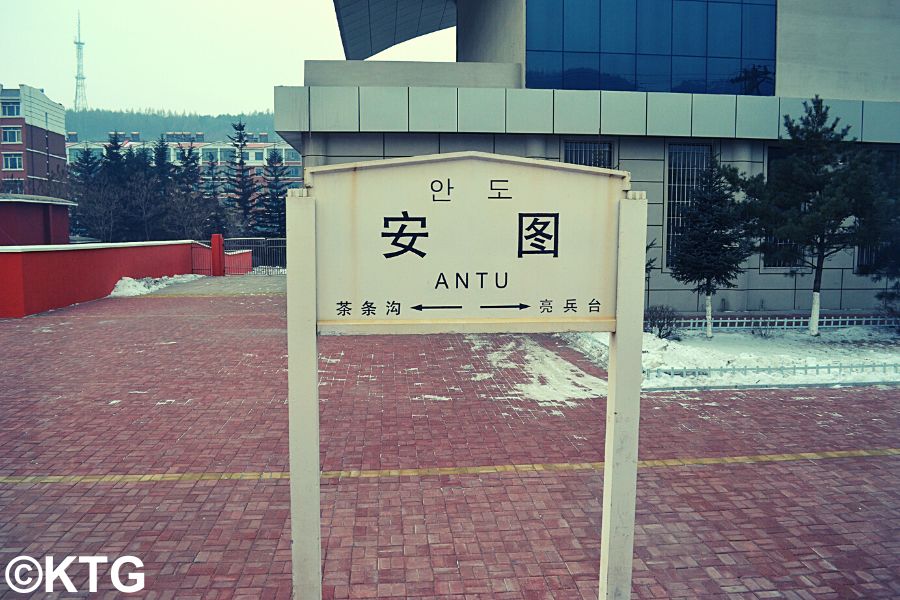
Antu train station
Antu
Antu (安图县,안도현)- a county in Yanbian it is mainly inhabited by Han Chinese. We sometimes make a stop here before heading to the Chinese part of Mount Paekdu. Note: if you notice carefully in the picture you can see the high speed train tracks which made going to this part of China much more convenient.
Please click on our Dandong page for information on areas close to North Korea that can be visited in China.
Related pages
Dandong | KTG® Tours Guide | ideal to visit as part of your North Korea tour
Dandong | KTG® Travel Guide | this border city is located across the Yalu River from North Korea opposite the DPRK city of Sinuiju. A visit to Dandong before or after going to North Korea adds a special taste to your DPRK trip. It combines ancient China with North Korean influence. Take boat ride between North Korea and China and see the most eastern Great Wall in China
Hekou Dandong China | KTG® | An Enthralling Glimpse into Rural North Korea
Hekou Dandong China | KTG® | Our one day tour will allow you take a boat trip close to North Korean soil and clearly see life in the DPRK. See the Hekou Broken Bridge which was crossed by Chinese soldiers in the Korean War.
Rason Special Economic Zone in North Korea | KTG® Tours DPRK Travel Guide
Rason | KTG® Tours | Casinos, Internal Borders and Economic Experiments in North Korea. The largest Special Economic Zone of the DPRK is located in the far northeastern part of the country bordering China and far east Russia. We arrange budget tours to this part of North Korea. Rason is the joint name given to the Rajin and Sonbong. We will be able to visit a North Korean market and the Golden Triangle Bank
Sinuiju Travel Guide | KTG® Tours | North Korea
Sinuiju | KTG® Tours | explore this North Korean border city trade hub with us! Capital of North Pyongyan province, this major DPRK border city with Dandong in China next to the Yalu River (Anmok River). KTG offer tours here and to the town of Dongrim
A trip to Hekou Village near Dandong with KTG®
After our Summer Tour a few of us at KTG® went an hour north of Dandong to the village of Hekou which is just across from the DPRK. We took a boat ride enabling us to see some Korean factories and daily life in North Korea.
Dongrim Town | KTG® | North Pyongan Province, DPRK (North Korea)
Dongrim Town | KTG® Tours | is located near Sinuiju in North Pyongan Province, DPRK (North Korea). It was opened to tourists in 2014. This place is ideal for hiking and enjoying nature and waterfalls in North Korea.
- Calle la Naval,
31 Bajo,
35008,
Las Palmas de Gran Canaria,
Las Palmas, Spain - +34 928 402 995
- info@north-korea-travel.com
KTG ® is a Registered Trademark.


















